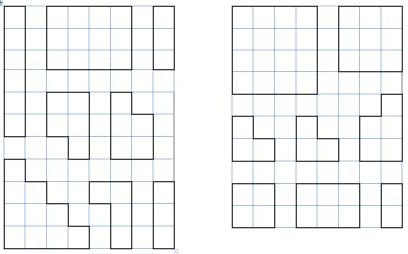Skip over navigation
This is one of a series of problems designed to develop learners' team working skills. Other tasks in the series can be found by going to this article.




Or search by topic
Number and algebra
Geometry and measure
Probability and statistics
Working mathematically
Advanced mathematics
For younger learners
Making Rectangles
Age 7 to 14
Challenge Level 





This is one of a series of problems designed to develop learners' team working skills. Other tasks in the series can be found by going to this article.

What are you aiming to do?
For the task:
Every member of the team has to end up with the same rectangle in front of them. The task is only successfully completed when everyone on the team has completed their rectangle.
As a team:
- Responding to the needs of others
- Helping others to do things for themselves.
Getting started
You will need to work in a team of four. If you have a fifth person available - use them as an observer (see guidance below).
In silence:
Distribute the 16 pieces randomly amongst the team (four pieces each).
Tackling the Problem
How to play
Players pass pieces to other team members in order to help one another complete their rectangle.
Rules
- No one can talk or give non-verbal signals to other members of the team.
- Each member of the team starts with four pieces in front of them.
- The pieces in front of each person should be visible to everyone.
- Team members can only give pieces; they cannot take pieces from someone else.
- Each team member must have at least two pieces in front of them at all times.
Use an observer to check that the team obeys the rules and offer one of the hint cards if, after a period of five minutes, the team is not making any progress.
You may also like
Geoboards
This practical challenge invites you to investigate the different squares you can make on a square geoboard or pegboard.
Tiles on a Patio
How many ways can you find of tiling the square patio, using square tiles of different sizes?
Pebbles
Place four pebbles on the sand in the form of a square. Keep adding as few pebbles as necessary to double the area. How many extra pebbles are added each time?

